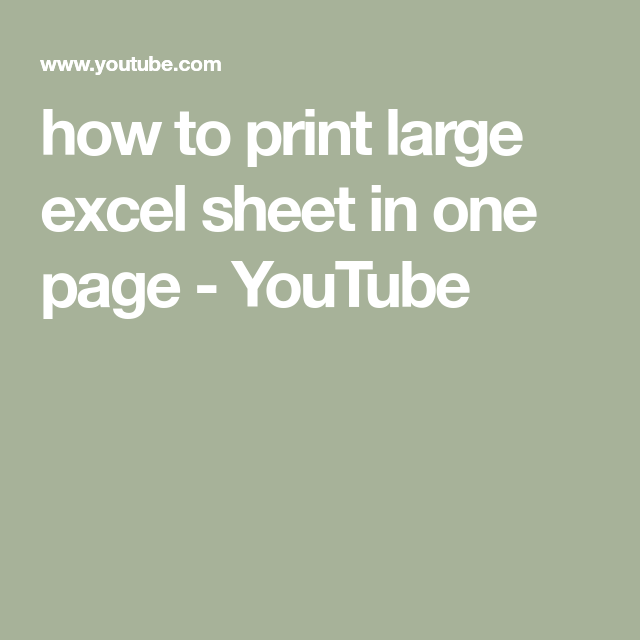5 Ways to Fit Excel Sheets to One Page

Mastering how to fit Excel sheets to one page can be crucial for efficient data presentation and sharing, whether you're presenting financial models, sales figures, or project timelines. In this comprehensive guide, we will explore five proven techniques to achieve just that. By the end, you'll have the skills to make your Excel data look polished and professional.
1. Adjust Page Layout


Adjusting the page layout is the foundation of fitting your Excel sheet to one page. Here’s how to do it:
- Go to Page Layout tab.
- Click on Margins and select Narrow or Custom Margins.
- Select Orientation to either Landscape or Portrait based on your sheet’s content.
- Adjust the Scale option to fit your content to one page, but be cautious not to make text too small.
🔍 Note: Changing the orientation might affect how your data looks, especially if there are many columns or rows. Test both orientations before deciding.
2. Print Area & Page Breaks


If your Excel sheet contains more data than necessary, setting a specific print area can help:
- Select the range of cells you want to print.
- Go to Page Layout tab and click on Print Area > Set Print Area.
- Use Page Break Preview from the View tab to see where Excel automatically inserts page breaks.
3. Cell Merging and Formatting


How you format your cells can also impact how content fits:
- Merge Cells: Use this sparingly to combine cells for headers or titles, ensuring you don’t compromise data integrity.
- Font Size: Reduce font size if necessary, keeping readability in mind.
- Row Height and Column Width: Adjust these manually or use AutoFit to make sure cells fit the content.
⚠️ Note: Excessive merging can make data analysis or editing in Excel more complex, so use it wisely.
4. Scaling the Sheet


Scaling provides a quick way to fit your data to one page:
- Go to File > Print Preview or directly to Page Layout > Scale.
- Adjust the Scale percentage; a lower number will reduce content size to fit within one page.
📌 Note: Scaling down too much can make text unreadable; consider it a last resort.
5. Simplify the Sheet


If your sheet is too cluttered, consider these steps to simplify:
- Remove Unnecessary Columns/Rows: Delete or hide columns or rows that are not essential for the printout.
- Hide Gridlines: Opt for a cleaner look by going to Page Layout > Sheet Options > Gridlines.
- Consolidate: Use functions like Subtotal or Pivot Table to summarize data.
- Filter: Filter out data that doesn’t need to be printed.
Fitting Excel sheets to one page involves striking a balance between content readability and design efficiency. By tweaking page layout, setting print areas, adjusting cell formatting, scaling, and simplifying your sheet, you can present your data effectively. These techniques not only improve the visual presentation but also optimize your document for printing or PDF conversion, ensuring that every sheet conveys its message clearly and concisely.
What if the data doesn’t fit even after scaling?

+
If scaling your Excel sheet doesn’t fit the content within one page, consider further simplification, like removing unnecessary data, using summaries, or adjusting your print orientation.
Is there a way to automate fitting the Excel sheet to one page?

+
Excel doesn’t have a one-click solution to fit all sheets to one page. However, you can use VBA (Visual Basic for Applications) scripts to automate some settings adjustments like scaling.
How can I see what my sheet will look like when printed?

+
Use the Print Preview feature by going to File > Print or Page Layout > Print Preview. This allows you to preview how your sheet will appear on paper or as a PDF.
Can I fit multiple sheets to one page?

+
Excel does not directly support fitting multiple sheets onto one page. However, you could consolidate data from different sheets into one or use PDF conversion tools with multiple pages to one feature.



